Triangle Building
Introduction
Text-to-speech Audio
One of three original structures to the Country Club Plaza, the Triangle Building was designed by Edward Delk and completed in 1923. Offering shops for everyday needs and services, its first occupant was a self-service Piggly Wiggly grocery store. In its first few months, the building gained multiple tenants before an additional unit was built the following year. As the Plaza became a destination for entertainment in addition to shopping, Clare Martin’s Jazz Club opened in 1938, bringing the first taste of jazz to the Plaza. Similar to other performance venues, white and African American musicians performed at Clare Martin's in front of an all-white audience. While the color line was strictly enforced throughout shopping districts like the Plaza until the start of the Civil Rights Movement, Kansas City was home to a small number of clubs that earned the nickname "Black and tan" because they open to all. The clock tower was built on the west side in 1992, staying true to the Plaza’s Spanish-inspired architecture and mimicking the tower of the Plaza Time Building. The Triangle building continues to be occupied by retail shops, offices, and restaurants. One of the central landmarks of the Plazza District, the Triangle Building remains an iconic landmark for both residents and visitors of Kansas City.
Images
The Triangle Building after completion c.1923
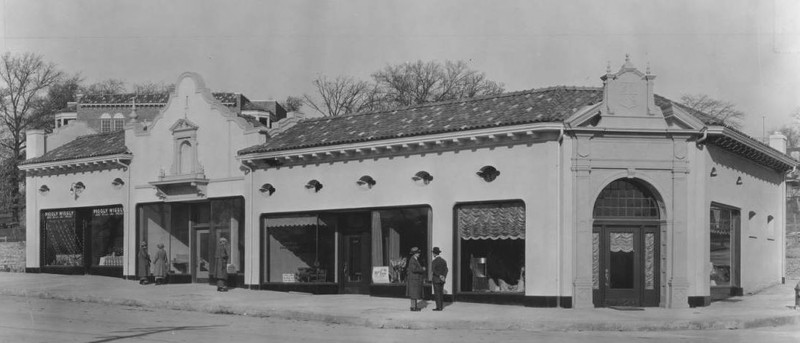
The Triangle Building after the second unit was completed on the west side c.1924
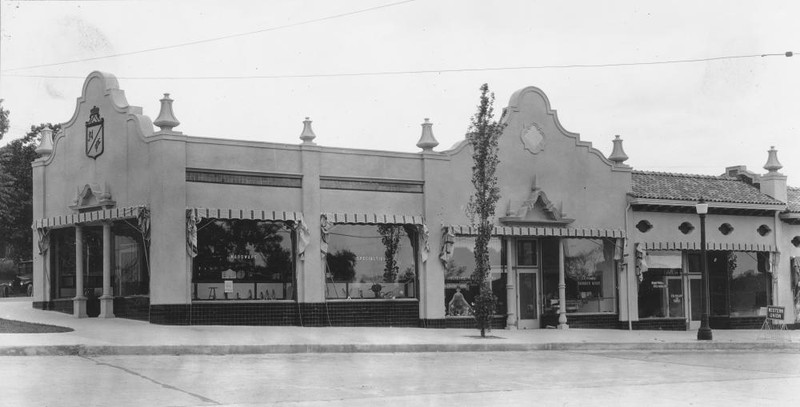
The Country Club Plaza Triangle Building c. 2016
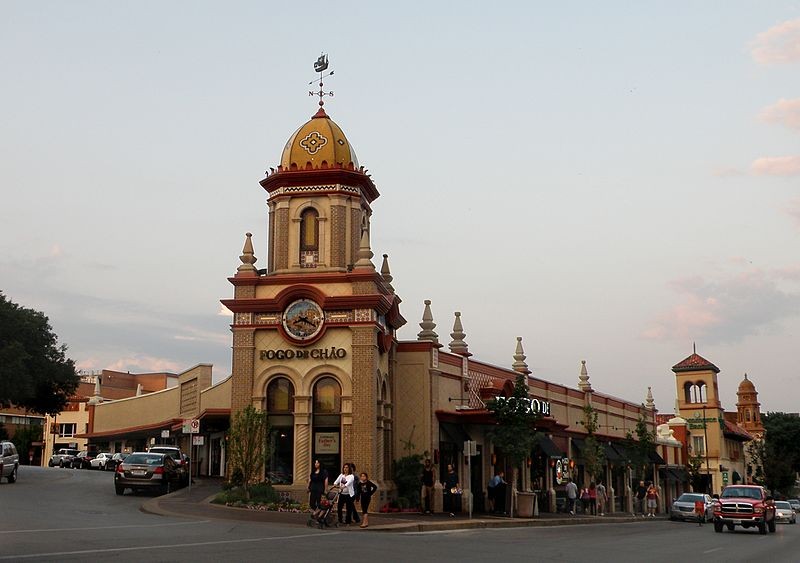
A detailed look of the clock tower addition to the Triangle Building
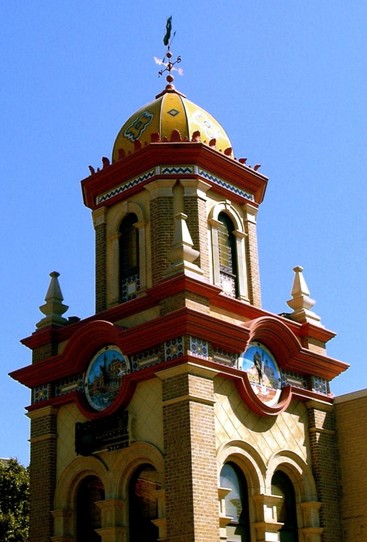
One of three ceramic clock faces by Carolyn Payne depicts the Plaza de Espana in Seville, Spain
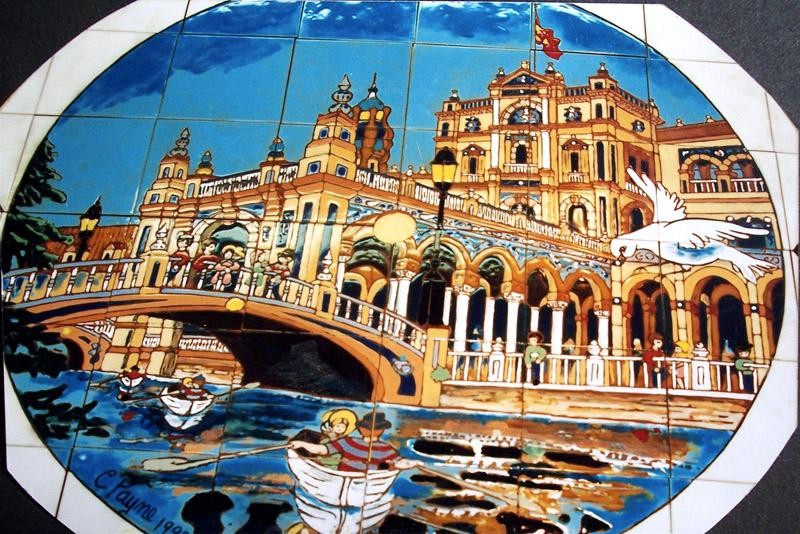
One of three ceramic clock faces by Carolyn Payne depicts the Alhambra Palace in Granada, Spain
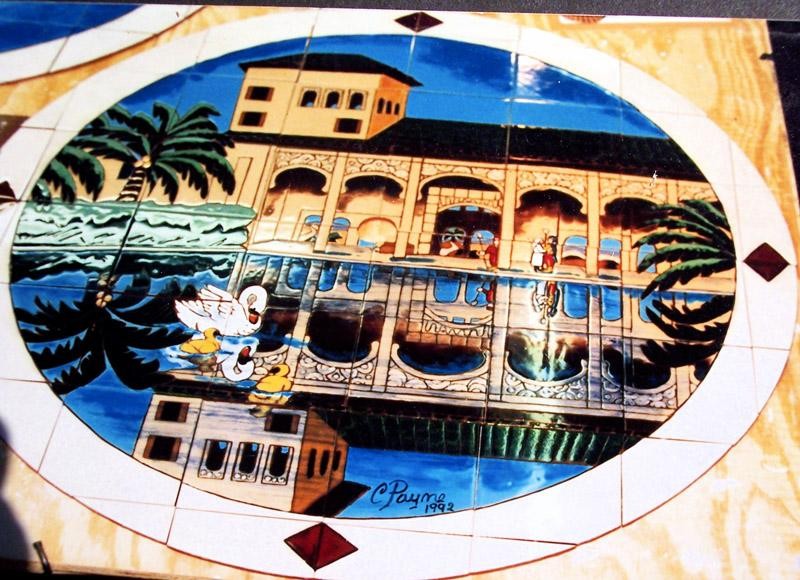
One of three ceramic clock faces by Carolyn Payne depicts a Spainsh skyline, inspired from a phone taken by Jeannette Nichols
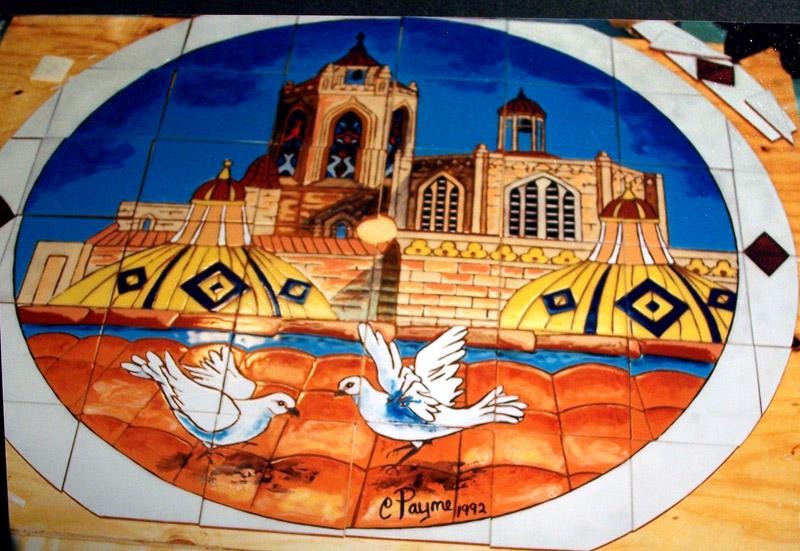
An interior photo of the self service Piggly Wiggly grocery store shows its layout and turnstile entrance
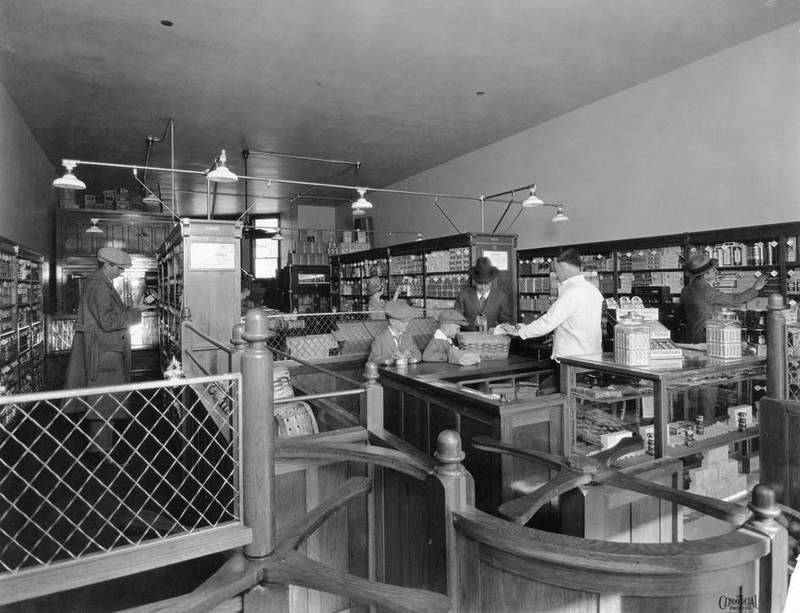
Backstory and Context
Text-to-speech Audio
Completed in June 1923, the Triangle Building was the second building built for the Plaza. It was named for the oddly shaped block in which it occupies - the block adjacent to the west of the first-built Suydam Building (now the Mill Creek Building) and caddy corner from the Chandler Landscape and Floral Company (1916), the original structure that predates the Plaza and the site of the district's first filling station. The Triangle Building was designed by leading Plaza architect Edward Buehler Delk who used elements of Spanish Revival architecture, echoing the charm of Californian buildings and fitting the vision of developer J. C. Nichols. Less than a year from the start of construction, the Country Club Plaza was taking shape as a premier destination for shopping and everyday needs and services for the nearby residents of Nichols’ newly developed neighborhoods, in addition to those arriving by automobile.
The first occupant of the Triangle Building was a self-service Piggly Wiggly grocery store owned by Arthur Snell Bird. Within a few months from opening the building had multiple tenants including Flora Michaelis Gifts shop; Hunter Brothers Drug Store; and the Brentnall Shop, a lingerie emporium. In 1924, a second unit was completed on the west side. Wymore Hardware Company moved in, and later, a restaurant was opened by the former manager of Mission Hills Country Club which offered reasonably priced lunch and a carpeted, “high-class dining room.” As the demand for services changed over the years, so did the tenants. In addition to shopping, the Plaza became a destination for entertainment. In 1938, Clare Martin’s Jazz Club opened in the Triangle Building and became the first venue in the area to welcome Black musicians to the stage. Pianist Jay McShann of the McShann Band and Charlie “Bird” Parker, a Kansas City-born jazz composer and saxophonist who helped to pioneer the "Kansas City sound," were among the leading musicians who performed here. While Kansas City was home to clubs that catered to the African American community, as well as a handful of "Black and tan" clubs that were open to all, Parker and other Black musicians were not welcomed as guests in the white-only venues throughout the city during the era of segregation.
One of the only major renovations to the Triangle Building was in 1992 when the clock tower was added to the west side, gifted by Miller and Jeannette Nichols. Its design reflects the original Spanish style of the Plaza and mimics the tower of the Plaza Time Building, which can be seen to the Southwest. The clock’s faces were designed by Kansas City artist Carolyn Payne, who uses a signature style of ceramic glazing that blends impressionistic painting and stained glass characteristics. Each of the three faces depicts a scene from Spain - the Plaza de España in Seville, built as the location of the 1929 World's Fair; the Alhambra Palace in Granada; and the skyline of Spanish buildings inspired from a picture taken by Jeannette Nichols. Miller Nichols gave Carolyn’s work a testimonial in 1992 after the completion of the tower which read, “Our friends and acquaintances are most lavish in their praise of the Clock Tower. It immediately became a landmark for the Plaza and for that matter Kansas City. You played no small part in the success of this Tower. Over the years your craftsmanship will be viewed and enjoyed by millions.” Decades later, both residents and visitors continue to admire the Plaza's history and works of art.
Sources
Country Club Plaza Walking Guide, Historic Kansas City. Accessed January 3rd 2022. https://www.historickansascity.org/wp-content/uploads/2018/04/98973-Historic-KC-LR_nocrops.pdf.
Gwynn, David. Kansas City (Missouri) Chain Grocery/Supermarket Locations, 1925-1992, Groceteria.com. July 8th 2019. Accessed January 3rd 2022. https://www.groceteria.com/place/us-missouri/kansas-city/.
Worley, William S.. J. C. Nichols and the Shaping of Kansas City: Innovation in Planned Residential Communities. University of Missouri Press, 2013.
midtownkcposter. In 1923, Work Began on First Block of Country Club Plaza, Midtown KC Post. October 1st 2018. Accessed January 3rd 2022. http://midtownkcpost.com/in-1923-work-began-on-first-block-of-country-club-plaza/.
Country Club Plaza, The Shopping Mall Museum. Accessed January 3rd 2022. http://shoppingmallmuseum.blogspot.com/2010/08/country-club-plaza-ward-parkway-and.html.
Carolyn Payne Murals. Accessed January 3rd 2022. https://www.paynecreations.com/.
http://shoppingmallmuseum.blogspot.com/2010/08/actual-layout-of-shopping-center-from.html
https://pendergastkc.org/collection/10554/k0054-v07p147-01/triangle-building-47th-street-between-wyandotte-and-central
https://commons.wikimedia.org/wiki/File:Kansas_City,_Missouri_-_Country_Club_Plaza,_Clock_Tower_-_panoramio.jpg
https://www.paynecreations.com/commercial-tile-artist/
https://www.paynecreations.com/commercial-tile-artist/
https://www.paynecreations.com/commercial-tile-artist/
https://www.paynecreations.com/commercial-tile-artist/
http://shoppingmallmuseum.blogspot.com/2010/08/actual-layout-of-shopping-center-from.html
